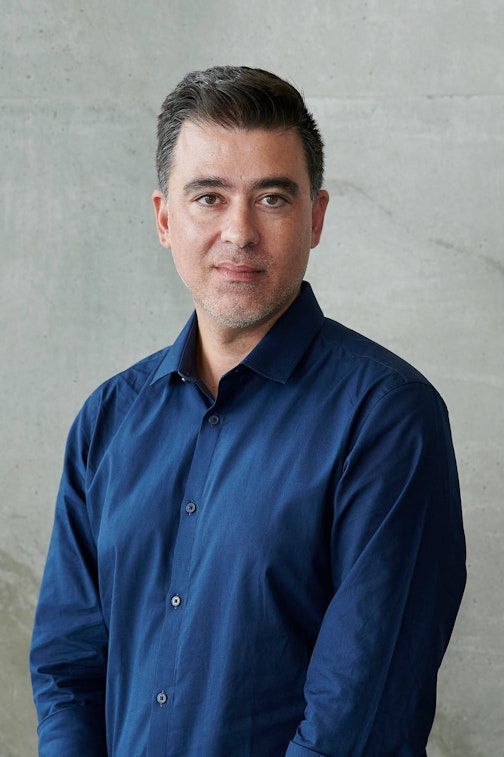Something happened
Pedro de Almeida
Something is always happening. Somewhere, somehow, somethings happen. The aggregate force of somethings—a lot of things—invariably impels art and culture into a corner where, collective backs against the wall, the most feasible (yet never quite reasonable) course of action might be to Move Fast and Break Things, as the Millennial maxim goes. With the advancement of years (i.e. more time for things to happen) comes wisdom (ergo, the ability to distinguish one thing from somethings). This is, of course, just another motivational one-liner, only this time coming down to us all the way from the ancients, who had to contend with their own special paradigm shifts. I don’t buy either. Whatever value these dictums hold—the first, a paean of entrepreneurial zeal for homogeneity dressed as individual empowerment; the second, commonly cited as an excuse for blind deference to authority that perpetuates unsubstantiated claims to superior judgement—hardly encourages individuals, much less culture, to learn the virtue of patience, lest patience means simply, listlessly, waiting around for something to happen. It always does.
On this day, a year ago, something happened. This third collection of 4A Papers, with its assortment of NOW, THEN, MAKE, TALK, SEE anti-theme headers, marks a calendar year since its emergence as a biannual publishing platform focused on art and culture in Australia and the wider Asia region. Thus far, 4A Papers has been privileged to offer commissioned texts from a range of contributors who have reported from Beijing, Delhi, Guangzhou, Hong Kong, Melbourne, Seoul, Srinagar and Yogyakarta among other places. That this is happening at all is, I strongly feel and hope readers concur, a stroke of good fortune amplified by collective efforts of the pen and of the keyboard; something is happening to the accessibility of arts publishing at a time when we need increased equity in diverse interpretation most. That something isn’t promising.
Not forgetting Sydney, in this issue we open with Ella Mudie’s probing take on ‘the current state of play between housing, demolition and the arts’ that draws connections between Millers Point, Waterloo and Haymarket. It’s been reported elsewhere that Sydney, right NOW, is the global capital of construction cranes—nowhere else will one find such an abundance of these heavy lifters of the building boom. As they loom over inner city blocks and the increasingly dense suburban ring that spreads north, south and west of the emerald harbour, Mudie considers a corollary question their presence proposes: how are artists and communities resisting destruction of homes, architectural heritage and displacement?
Reflecting on the recent past, Harriet Reid sensitively shares her first experience of developing an exhibition, in this case a survey with 4A founding artist member Dacchi Dang. Work is nothing if not an opportunity to learn and, if done properly now and THEN, to unlearn, which is to say that any attempt to understand a life’s work, much less another’s life through work, is first and last an exercise in humility and an appreciation that ‘empathy is an avenue through which ideas can be more fully apprehended.’ Similarly, Kate Warren offers a deep analysis of Sonia Leber and David Chesworth’s Earthwork, proposing how the duo MAKE speculative scenarios that test the dialectic of what Warren conceptualises as ‘site and non-sites’. Bringing ‘a broader understanding of Western socio-political incrimination in contemporary conflicts’ into the fold, Warren questions denials of complicity in so-called unmanned acts of violence, especially in ongoing undeclared states of war.
Back in August, 4A headed west to Parramatta to TALK about certain strands of art and culture in South Asia and Australia. Yasmin Tambiah was there to cover the proceedings of 4A’s annual symposium—presentations from Reena Kallat, Vidya Shivadas and Adeela Suleman alongside their peers in art, writing and performance. Here, Tambiah offers us her take on the day’s debates so that you might form your own view on the efficacy of ‘Australians’ capacity for effective cultural diplomacy in the Indo-Pacific region, and the productive consequences of cross-border cultural flows.’
Cambodian-born artist Anida Yoeu Ali takes things up a notch by challenging authorities to ‘Ban me!’, further explicating her commitment to political agitation alongside cultural, religious and aesthetic hybridity as she sat down to TALK with Bridie Moran. Checking into the Intercontinental Hotel in downtown Seoul, Micheal Do enjoys breakfast with esteemed curator and recently appointed Director of the Gwangju Biennale Foundation, Sunjung Kim. Over croissants and an omelette, Kim glances back over the highs and lows of her career over the past twenty-two years.
Another capital city in Asia experienced its first foray into the international art event circuit with Kathmandu staging an inaugural Triennale, its rebranded arts festival. Artist Shivanjani Lal was there to SEE a curatorial conceit that ‘facilitated an opportunity for Nepali artists to shine and to create intelligent, playful and provocative works that only Kathmandu “insiders” could deliver about the city and their home.’
In case you didn’t get to SEE it, Lauren Carroll Harris delves into South Korean artist Geumhyung Jeong’s Australian premiere at Liveworks, the annual festival of contemporary art and performance from Sydney’s Performance Space. With verve, wit and deft psychological analysis, Harris teases us with the proposition that ‘beyond a fragment of common kinks and desires lies a whole other universe of inclinations and barely-withheld repressions.’ Revealing the erotic workings of just how one might fall madly in lust with inanimate objects—even grand architecture such as the Eiffel Tower (yes, it’s a thing)—she asserts, ‘Here’s the truth: sex is funny.’ Now, that’s something.
Best, and less
Pedro de Almeida
Editor, 4A Papers
About the contributor
Pedro de Almeida is a curator, programmer, arts manager, writer and editor based in Sydney, Australia.
